Put a Rustic Spin on Your Cottagecore Design with Farmcore
This style isn't just about cows and cornfields—there's a lot to love about farmcore.
Decor styles like modern farmhouse and cottagecore are classic for a reason, and they're not going anywhere anytime soon. So it's not too surprising that a more rustic version of these aesthetics is gaining popularity: Appropriately deemed farmcore, the trending style inspired by slow-country living gives a more earthy, rural feel to your space. While not as mainstream as other nature-inspired looks just yet, you're about to see it take over homes everywhere—big cities included. Here's how to get ahead of the trend.
Related: 27 Country Kitchens Bursting with Warm, Welcoming Style
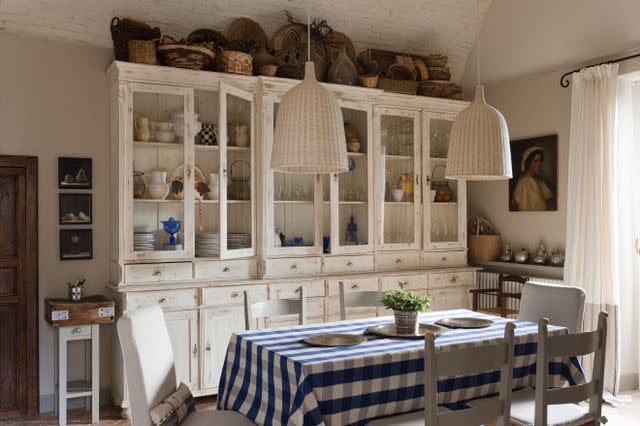
What is Farmcore?
Farmcore, aka countrycore, draws inspiration from Western farm life. It’s all about embracing the slower, simpler lifestyle that comes with settling down in a small town.
“Farmcore is close to my heart, hitting me at my roots, and I think a lot of Americans can relate,” says Melinda Trembly, principal designer of California-based design studio Rincon Rd. “Slow farm-to-table dinners with family and friends, farm animals in the backyard, or even chickens in the house. We all romanticize the lifestyle, so it’s no surprise it’s trending."
In interior design, this trend incorporates rustic wood furniture, cozy linens, home-grown produce on display, and stylishly repurposed farm tools and equipment. It also easily translates into a lovable style for kids' bedrooms and nurseries, showcasing animals, tractors, and other farm motifs. At its heart, it’s an aesthetic that features plenty of vintage and antique details, plus natural elements for an intentionally imperfect look.
Tips for Implementing Farmcore at Home
While the name “farmcore” might conjure up images of corny (pun intended), barnyard-inspired decor, the style is actually far more refined than the name may imply.
“It doesn’t have to be taken so literally," Trembly says. "In fact, subtle nods lend to a warm sophisticated space."
Stick to Earthy, Neutral Colors
When it comes to colors, go with neutral tones and earthy shades.
“I like to draw color inspiration from nature—think of warm muddied earth tones,” Trembly says.
Start by creating a neutral backdrop using colors like warm whites, beiges, and browns, then add pops of muted greens, oranges, yellows, pinks, and reds throughout your space via decor pieces, furniture, and rugs and throws.
Related: Earth-Tone Paint Colors Recommended by the Pros
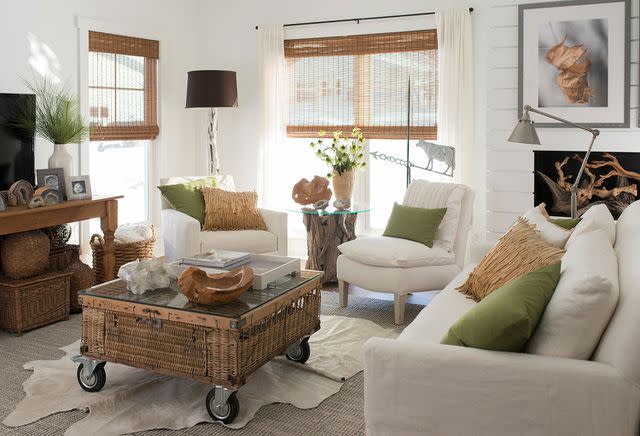
Greg Scheidemann
Add Natural Elements
It makes sense that bringing natural elements indoors is a major part of achieving the farmcore look. These nature-based touches create a warm and inviting atmosphere, says London-based interior designer Rudolph Diesel. This doesn’t just mean having a vase of fresh flowers on your counter at all times (although that’s never a bad idea)—it extends across the entire aesthetic, encompassing furniture, decor, fabrics, and more. Stick to simple, natural materials wherever possible including wood, cotton, linen, and stone.
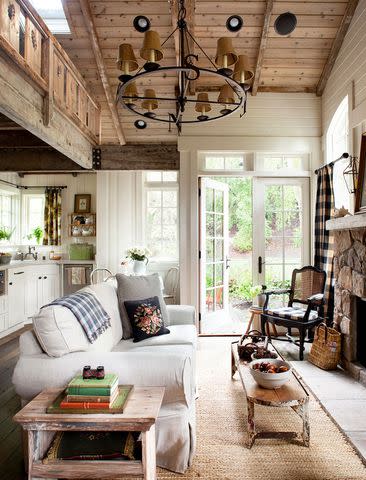
Paul Dyer
Feature Antique and Vintage Pieces
When trying out this aesthetic, browsing antique markets and thrift stores will be your best friend. This look relies heavily on antique and vintage pieces—think dressers, old milking stools, ceramic jugs, dinnerware, and old curio cabinets.
Old farm equipment can be used tastefully around the home to add to the space's authentic country feel.
“I’m always on the hunt for vintage farm equipment to repurpose and use in an unexpected way," Trembly says. "An old chicken feeder, a hand tool, a rusted tractor seat—they can all look like a piece of art when displayed more like a museum piece and take on an elevated flair."
Related: How to Find the Best Vintage Home Decor, According to a Pro
Avoid Luxurious and Contemporary Furnishings
At it’s heart, farmcore is about romanticizing the farming lifestyle. Luxurious and contemporary materials, furniture, and decor won't fit in a farmcore space—avoid modern, angular furniture, polished metals, and elegant fabrics like velvet.
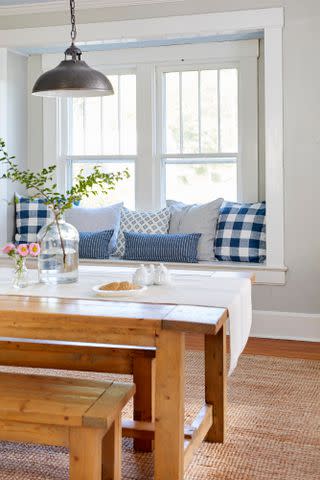
ADAM ALBRIGHT
Play with Patterns
Stripes, plaids, florals—the key to using them tastefully is to not go overboard and keep the color palette muted and earthy. Stick to one or two different patterns per space, and be sure to vary their scale to add contrast and visual interest. Play around with accent pieces like throw pillows, blankets, and tablecloths so that your rooms don't feel overwhelming.
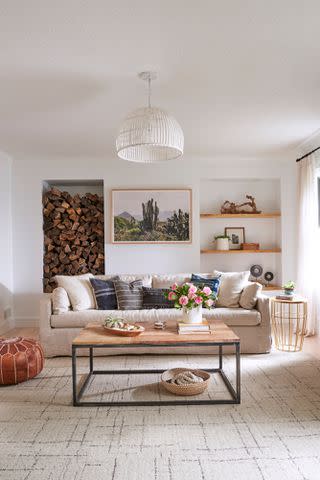
Jay Wilde
Less is More with Decor
Lastly, don’t go overboard with decor in your farmcore space–simple is the name of the game here. On a scale from minimalism to maximalism, farmcore can be found somewhere in the middle.
“Too many decorations can make the space seem cluttered and overwhelming," Diesel says. "Instead, opt for fewer pieces with bolder statements to achieve a more refined look."
For more Better Homes & Gardens news, make sure to sign up for our newsletter!
Read the original article on Better Homes & Gardens.

